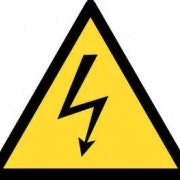What's beneath the world's biggest wave project
Lockheed Martin, best known for its military aircraft and other cutting edge airborne machinery, is switching gears in a big way. The company has signed on with Victorian Wave Partners to engineer a 62.5 MW ocean power project off Australia's southeast coast, billed as the world’s largest wave energy project.
The new project will feature a little gizmo we’ve been following for several years now, the PowerBuoy wave-powered electricity generator developed by a company called Ocean Power Technologies.
So, let’s see what these guys have been up to since we last checked in.
Figure 1: The PowerBuoy wave energy generator

Source: Ocean Power Technologies
The world’s largest wave energy project
Victorian Wave Partners was formed by OPT’s special-purpose company, OPT Australasia, to develop the project. Lockheed Martin will leverage its experience at the manufacturing end to get the PowerBuoy components into production and integrate the wave energy converters.
CleanTechnica first took note of OPT back in 2010, when its small scale PowerBuoy became the first ever grid-connected wave energy system in the US.
The hook-up took place at a shared wave energy test bed developed by the US Navy in Kaneohe Bay at Marine Corps Base Hawaii, in Oahu, where wave energy experiments have been going on since 2003.
If you’re doing the math at home, yes, the test bed goes all the way back to the Bush Administration, partnering the US Navy with the Hawaii National Marine Renewable Energy Centre.
Scaling up wave energy
The concept behind the PowerBuoy is relatively simple. The shell of the PowerBuoy is literally a buoy that bobs up and down on the waves. That produces a mechanical stroking motion, which is transferred to a converter called a 'take-off unit', which powers an on-board generator. Electricity from the generator is conveyed to shore by cable.
That’s all well and good but the next challenge is to scale up the mechanism into a useful size while maximising efficiency, and developing a cost-effective manufacturing stream.
By 2012, the navy was expanding and enhancing its wave energy facility, and OPT developed a utility-scale version of the device.
Aside from scaling up the design, one key efficiency improvement was the switch from a hydraulic drive take-off unit to a direct drive unit.
The device is also tunable on a wave-to-wave basis, meaning that it adjusts to squeeze the most electricity out of each individual wave.
For extra bonus points, the PowerBuoy only rises about 9m off the surface of the water, with the bulk of its guts resting below. That low height, relative to offshore wind turbines, could give wave energy an edge on site selection where aesthetic concerns come into play.
Although the Australia project is expected to be the world’s largest of its kind (according to OPT, there’s a potential for 100 MW), let’s note for the record that OPT also has been testing the Powebuoy off Scotland since 2011, and it is in the process of commissioning another one off the coast of Oregon.
As for Lockheed Martin, expect more of the unexpected from this aeronautics firm. As part of a move to rebrand itself as climate-focused, “smart energy” company, Lockheed Martin also recently partnered with Concord Blue Energy to commercialise that company’s high tech waste-to-energy process in global markets.
Originally published on CleanTechnica. Reproduced with permission.













